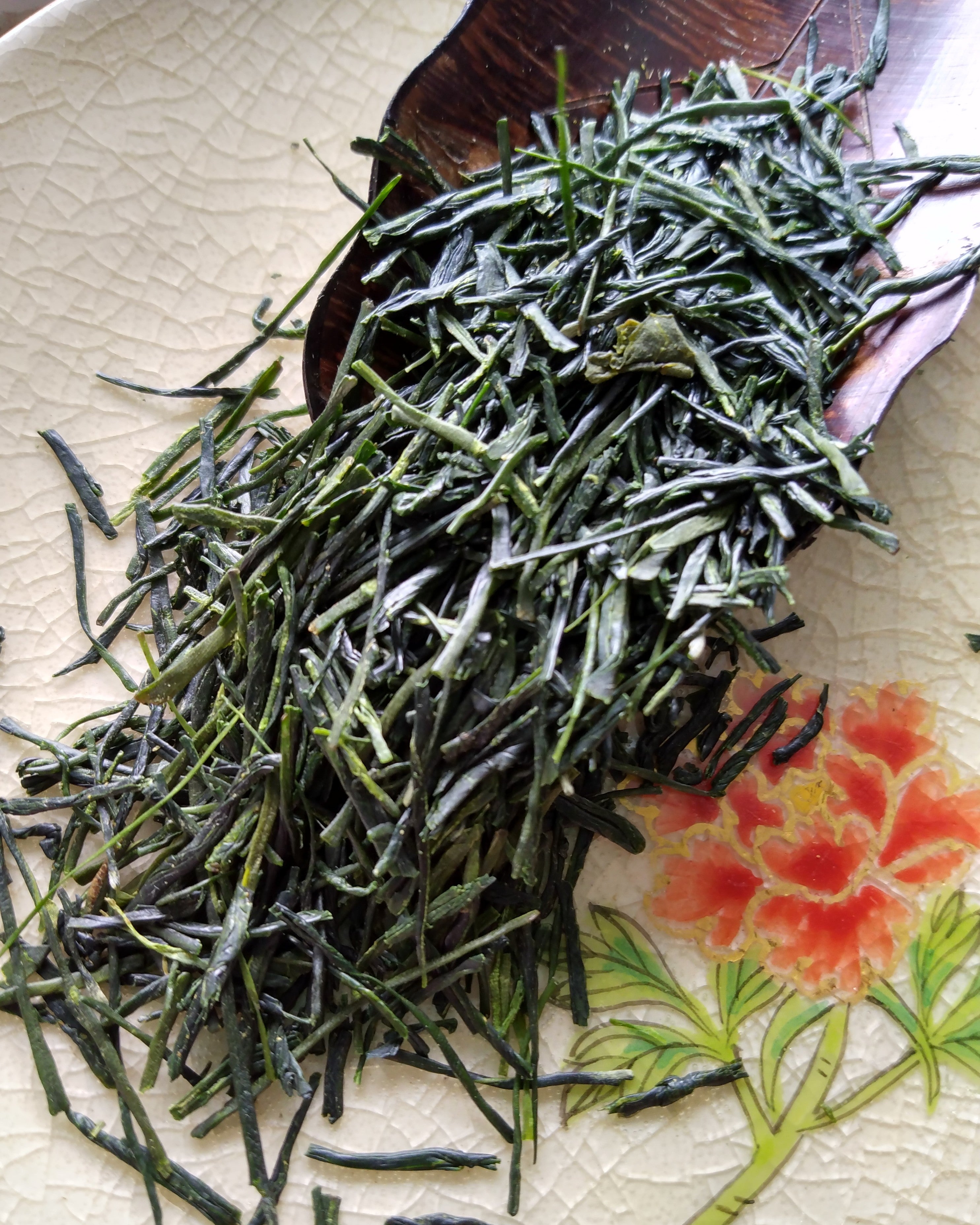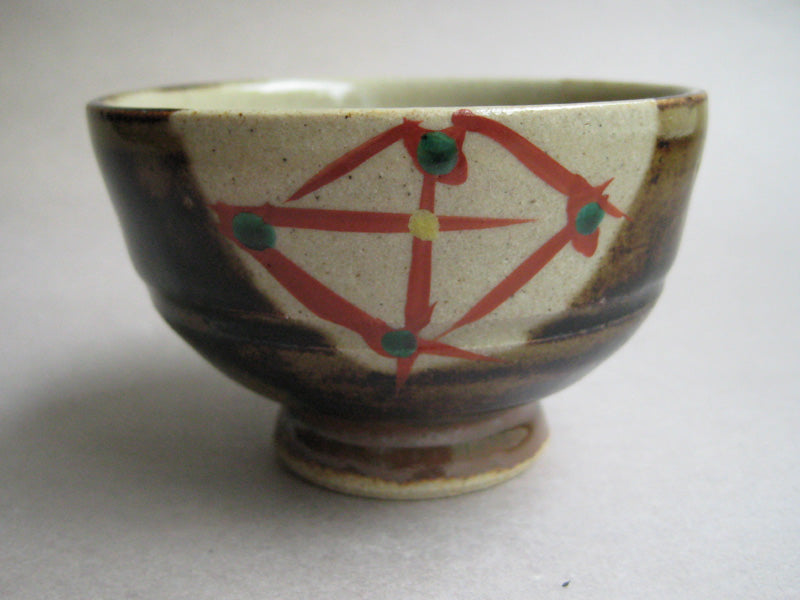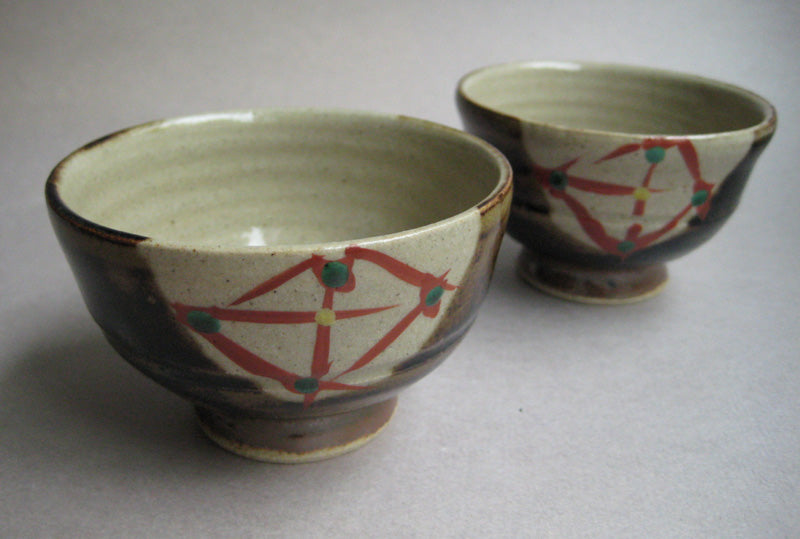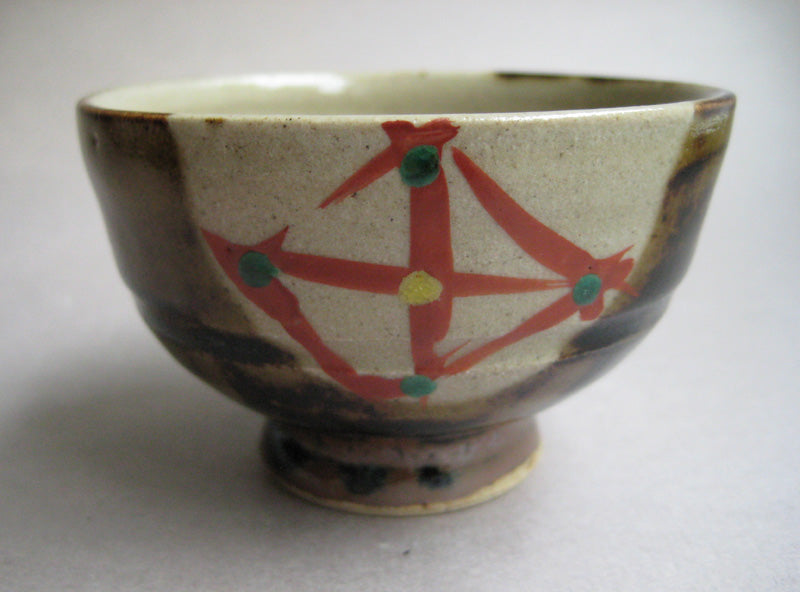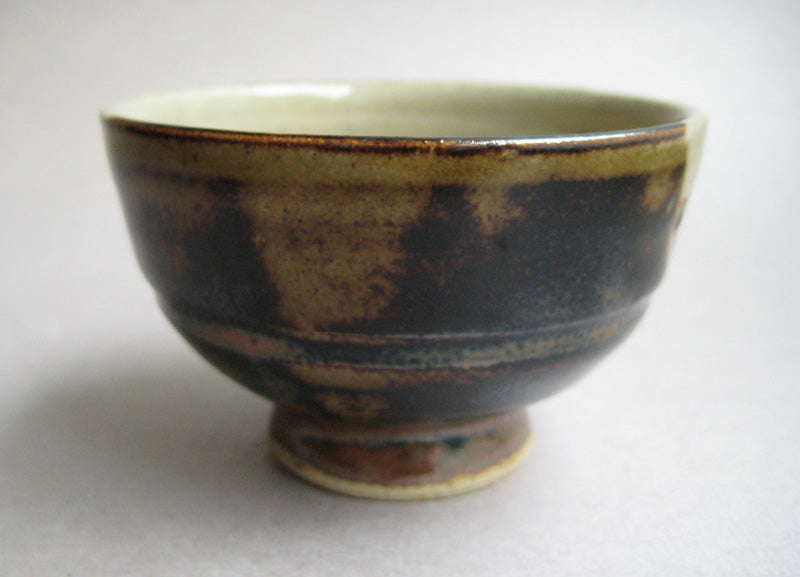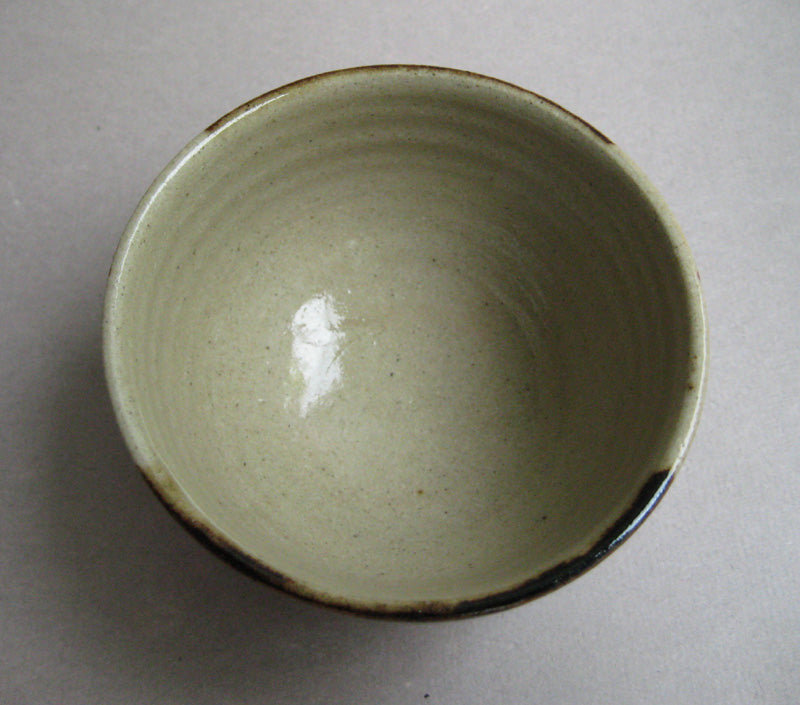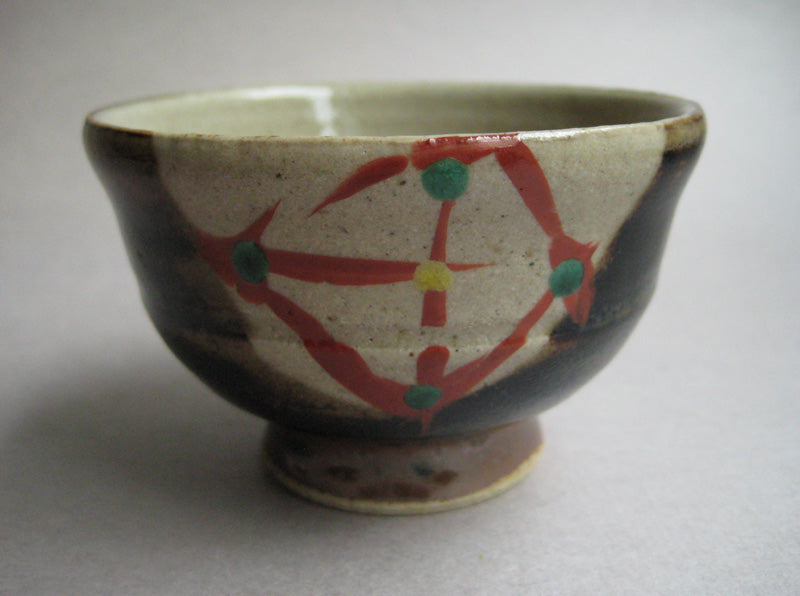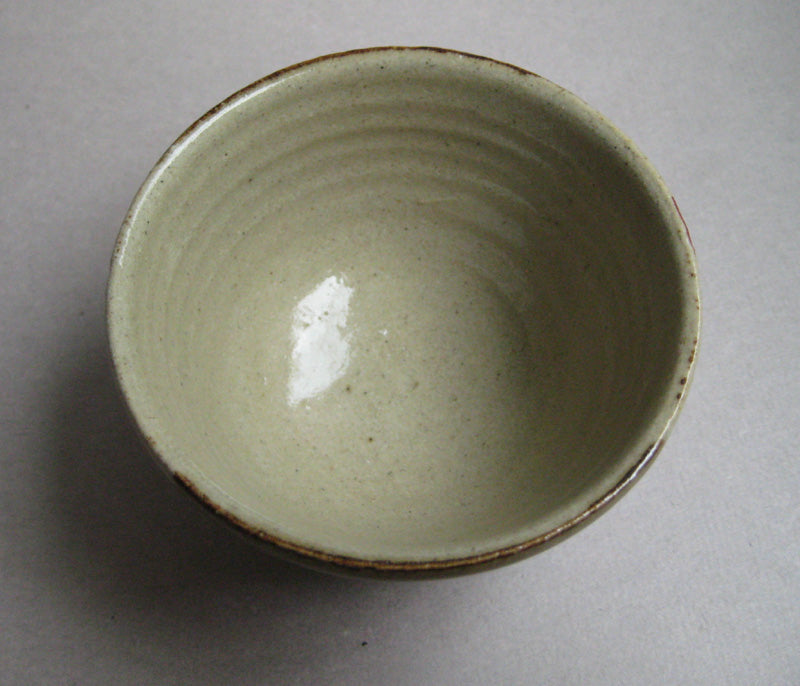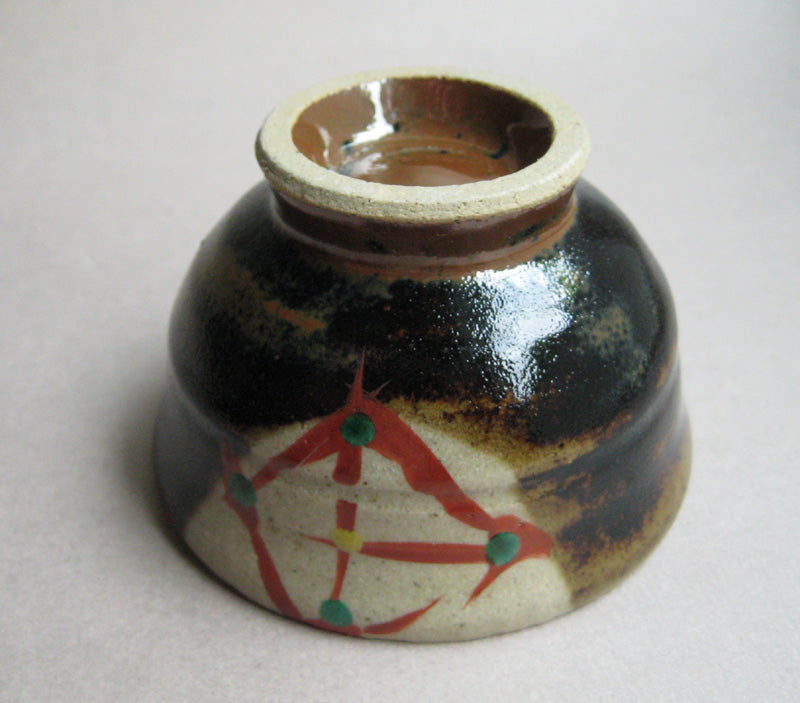Description
Guinomi, Sake Cups; by Hinata Kiln; Mashiko, Japan. Can also be used for high grade Sencha or Gyokuro Tea. One available, #HG.85 (#HG.84 SOLD). Kaki glaze with overglaze red, green, & yellow enamels in diamond pattern. H. 2"(5cm) x Dia. 3.125"(7.75cm.) Weight 83 grams. Volume 90ml(3oz).
Hinatagama (Hinata Kiln) was established in Mashiko by Sudo Yujiro during the Meiji Period (1868-1912.) Sudo Yujiro was a potter at the Jishoji-yaki kilns in Gumma Prefecture. Production at the Jishoji-yaki kilns had declined at the turn of the century and many potters relocated to Mashiko around 1905. In the kilns 2nd generation, under Sudo Yasutaro, there was considerable growth in Mashikos pottery industry and Hinatagama was a large kiln employing several craftsmen. This was also the period marked by the arrival of Hamada Shoji in Mashiko, who was to have a profound influence on this small folk pottery village, and Hinatagama itself. Folk wares, like Mashiko-yaki, were falling out of fashion technically and aesthetically, and the Mingei (Folk Craft) Movement; led by Yanagi Soetsu and potters like Hamada Shoji, Kawai Kanjiro, and Bernard Leach, ushered in a new era of individual studio artists who were inspired by folk craft, and who incorporated folk craft aesthetics into their work. Yasutaros son, Takeo, and Hamadas 3rd son, Atsuya, were close friends who played together daily. Takeo eventually became an apprentice of Hamada Shoji, who by this time had been designated a National Living Treasure, and worked at the Hamada kiln. Afterwards, Hamada helped Takeo establish his own kiln directly in front of his own (the present-day site of the Hamada Sankokan Museum) and this is still the current site of Hinatagama today. Continuing as the 3rd generation of his family potting in Mashiko, Sudo Takeo (1931-1998) gained considerable recognition for his work as a Mashiko potter; representing Tochigi Prefecture abroad, having numerous exhibitions in Mashiko and Tokyo, training several future generations of Japanese and International potters, and having his vase featuring the traditional Mashiko kaki (persimmon) glaze presented to Crown Princess Masako in 1993. Hinatagama is currently operated by 4th and 5th generation potters, Tagami Isamu (Sudo Takeo's son-in-law) and Tagami Munetoshi (grandson of Sudo Takeo,) who continue not only the pottery traditions of their family, but also the tradition of folk pottery in Mashiko.
